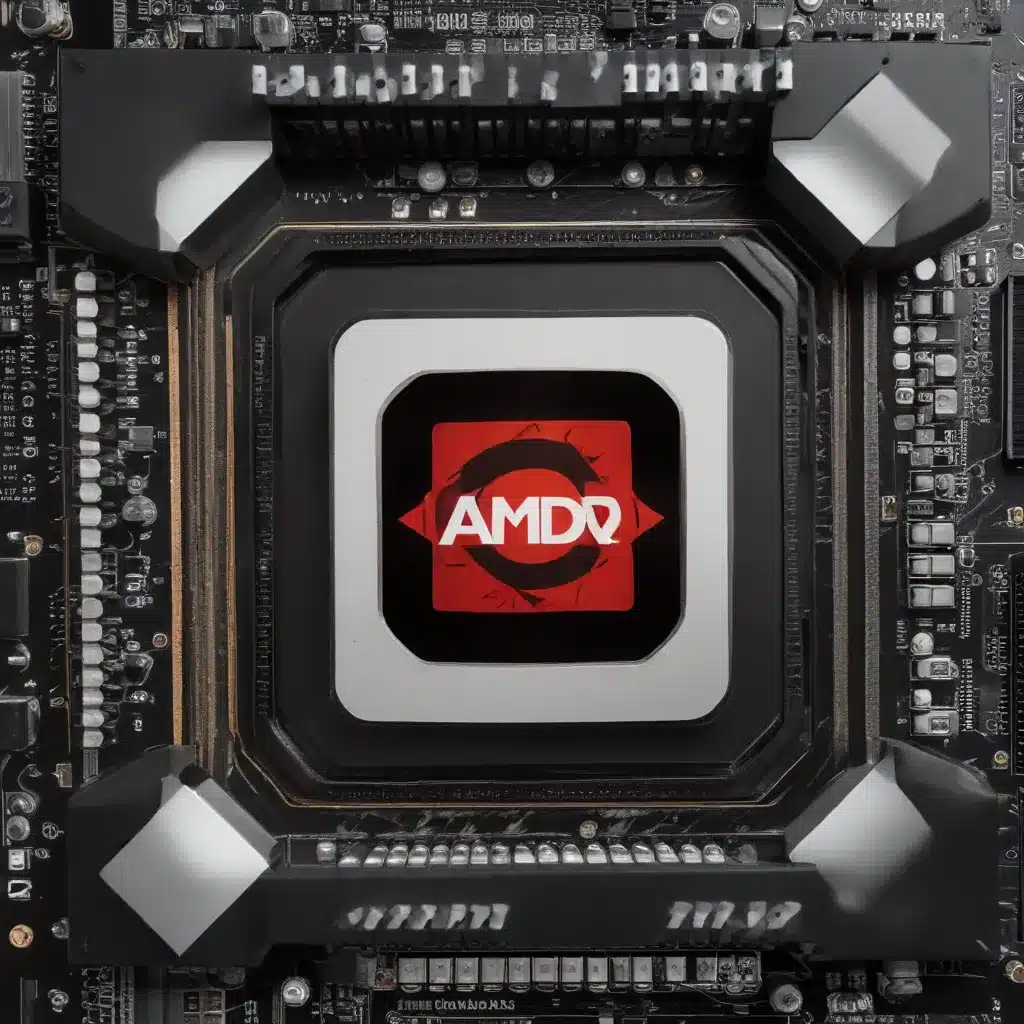
GPU Architecture and Performance
AMD’s GPU lineup has long been recognized for its impressive performance and power efficiency. At the core of this are the company’s advancements in graphics processing unit (GPU) architecture and microarchitecture. Modern AMD GPUs are built upon a foundation of highly parallel compute units, advanced memory subsystems, and intelligent power management.
The basic hardware components of an AMD GPU include the graphics processing cores, known as stream processors, which handle the bulk of the rendering workload. These are complemented by texture units, raster operations pipelines, and a robust memory controller that facilitates high-bandwidth data transfer. The microarchitecture – the underlying design of these components and how they interact – is where AMD has consistently pushed the boundaries, delivering impressive performance-per-watt.
Undervolting Techniques
One of the most effective ways to maximize the efficiency of an AMD GPU is through undervolting. This process involves reducing the operating voltage of the GPU, which in turn lowers power consumption and heat generation without necessarily impacting performance.
Dynamic Voltage and Frequency Scaling (DVFS) is a key technique employed by AMD to enable undervolting. DVFS allows the GPU to intelligently adjust its voltage and clock speeds in response to the workload, ensuring optimal efficiency. By leveraging DVFS, users can find the minimum voltage required to maintain stable operation at a given frequency, resulting in significant power savings.
Power Consumption Optimization: Beyond just undervolting, users can further optimize power consumption by carefully managing GPU power limits and thermal thresholds. Many AMD software utilities, such as Radeon Software, provide granular control over these parameters, allowing users to fine-tune the GPU’s behavior for their specific needs and system constraints.
Thermal Management
Effective thermal management is crucial for maintaining the long-term health and performance of an AMD GPU. Proper cooling strategies are essential, as GPU workloads can generate substantial heat that, if left unchecked, can lead to throttling, performance degradation, and even hardware damage.
Heat Dissipation Strategies: AMD GPUs employ a variety of heat dissipation techniques, including the use of heatsinks, heatpipes, and high-performance cooling fans. Aftermarket GPU coolers, such as those from third-party manufacturers, can further enhance cooling capabilities, allowing for lower temperatures and more headroom for overclocking or undervolting.
Cooling System Design: The overall design of the cooling system, including airflow management and case ventilation, plays a crucial role in GPU thermal optimization. Users should ensure that their system provides adequate airflow and that any case fans or liquid cooling solutions are configured to effectively channel heat away from the GPU.
Advanced Power Management
In addition to undervolting and thermal optimization, AMD GPUs also benefit from advanced power management features that help maximize efficiency and performance.
Power States and Transitions: AMD’s GPU power management system includes a range of power states, from low-power idle modes to high-performance gaming states. The GPU can seamlessly transition between these states, adjusting power consumption and clock speeds as needed to match the workload.
Power Monitoring and Telemetry: AMD provides comprehensive power monitoring and telemetry capabilities, allowing users to track real-time power consumption, temperature, and other key metrics. This data can be invaluable for optimizing power settings, identifying thermal bottlenecks, and ensuring the GPU is operating within its intended parameters.
Benchmarking and Evaluation
To assess the impact of undervolting, thermal optimization, and advanced power management on AMD GPU efficiency, it’s essential to conduct thorough benchmarking and evaluation.
Synthetic Workloads: Tools like 3DMark, Unigine Superposition, and AIDA64 can be used to run standardized GPU benchmarks, providing quantifiable performance metrics and allowing for direct comparisons between different configurations.
Real-World Application Performance: In addition to synthetic tests, it’s important to evaluate the GPU’s performance in real-world gaming and productivity workloads. Monitoring frame rates, frame times, and overall system responsiveness can provide valuable insights into the tangible benefits of optimization efforts.
Optimized GPU Configurations
By leveraging the techniques discussed, users can achieve highly optimized AMD GPU configurations that deliver a balance of performance and efficiency.
Overclocking Considerations: While undervolting focuses on reducing power consumption, overclocking can be employed to extract additional performance from the GPU. However, it’s crucial to carefully manage the trade-offs between performance gains and increased power draw, as well as thermal constraints.
Balanced Performance and Efficiency: The ultimate goal is to find the sweet spot where the GPU delivers the desired level of performance while maintaining optimal efficiency. This may involve a combination of undervolting, power limit adjustments, and careful thermal management to ensure the system operates within its thermal and power envelopes.
Software and Drivers
Maximizing the efficiency of an AMD GPU requires the use of the appropriate software tools and drivers.
GPU Drivers and Firmware: Keeping AMD’s GPU drivers and firmware up-to-date is crucial, as these updates often include performance improvements, bug fixes, and enhanced power management capabilities.
Vendor-Specific Utilities: AMD provides a range of software utilities, such as Radeon Software, that offer comprehensive control over GPU settings, including undervolting, power limits, and thermal management. These tools are invaluable for fine-tuning the GPU’s behavior and achieving optimal efficiency.
System Integration and Compatibility
When optimizing AMD GPU efficiency, it’s important to consider the broader system integration and compatibility factors.
Hardware Compatibility Factors: The GPU’s performance and efficiency can be influenced by the compatibility and configuration of other system components, such as the CPU, motherboard, and power supply. Ensuring a balanced and compatible system is essential for achieving the desired results.
Software Ecosystem Integration: The GPU’s efficiency is also affected by the software ecosystem, including the operating system, game engines, and other applications. Ensuring proper driver and software integration is crucial for maximizing the GPU’s potential and maintaining stability.
By following the principles and techniques outlined in this article, users can unlock the true potential of their AMD GPUs, achieving impressive levels of performance while maintaining exceptional power efficiency. Whether you’re a gamer, content creator, or simply someone looking to maximize the lifespan and reliability of their system, these strategies will help you get the most out of your AMD graphics hardware.












